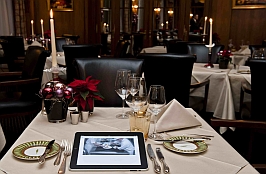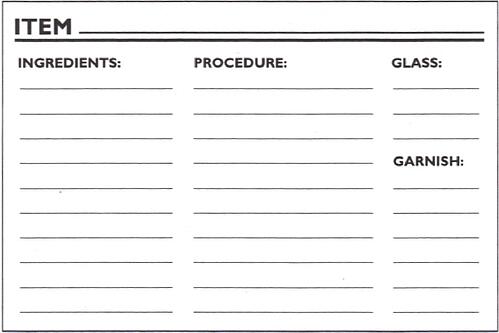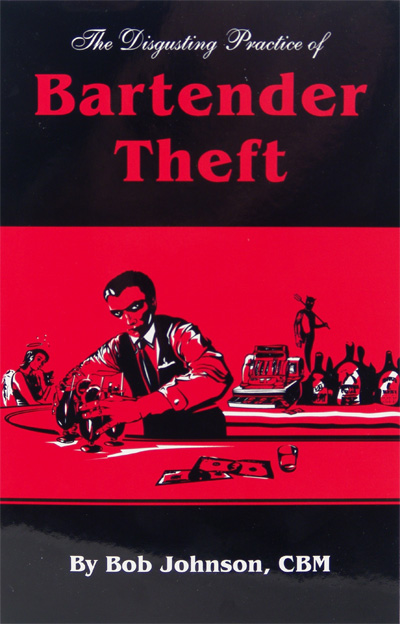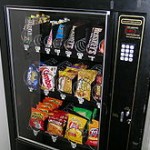Establishing a General Pricing Plan
 Sensitive pricing can make or break your operation. Pricing decisions should never, ever, be made arbitrarily. It is crucial to achieve that fine balance between pricing for optimum profits and making customers feel that they're getting value for money. Of course, you want to sell the drinks at their optimum sales volume, but if you tip the balance by raising the sales price too high, the sales volume will actually drop. So will the profits.
Sensitive pricing can make or break your operation. Pricing decisions should never, ever, be made arbitrarily. It is crucial to achieve that fine balance between pricing for optimum profits and making customers feel that they're getting value for money. Of course, you want to sell the drinks at their optimum sales volume, but if you tip the balance by raising the sales price too high, the sales volume will actually drop. So will the profits.
- Research target audience. Investigate your potential market. Check out the opposition, even if this means visiting every liquor outlet in your locality. Get a feel for how much guests are prepared to pay for certain types of drinks.
- Compete. A realistic view of market positioning is essential. Aim to match, beat or pitch for exclusivity (known as a "highball decision", in the beverage industry). All three methods can work. What won't work is a "muddling along" approach. Make a decision, set your goals and price accordingly.
- Type of operation. Customers' image and perception of your establishment play a major role in establishing a pricing structure. Guests have fixed expectations about costs. For example, they expect to pay above-average price at a smart nightclub or "adult" establishment. They expect neighborhood bars, on the other hand, to be cheaper. Devise a pricing strategy that meets customer expectations.
- Portion costs. You may have done your research and drawn up the perfect plan to wipe out the opposition, but, if you haven't "bought in" at competitive prices, you're not going to win. Keep portion costs to a minimum by buying low.
Take a Fresh Look at How You Apply Your Pricing Strategy
Having carefully considered all aspects of your pricing strategy, including cost, availability, competition and target audience, it is essential to make your pricing plan as user-friendly and easy to operate as possible. Simplify.
- Price lists. A complicated price list with too many options and variables leads to employee confusion and incorrect charging. Even if those errors result in higher gross sales, customers will soon complain and you will lose business.
- Devise main price categories. Group products according to their wholesale costs. Use standard increments, like 50 cents, to separate price categories.
- Keep drink prices based on quarters. Prices ending in quarters - $0.25, $0.50 and $0.75 - are easier for bartenders to add up mentally.
- List product prices with their corresponding specific portion size. For example, alongside each item in the liquor inventory, list the appropriate portion size for that drink.
- Point-of-sale system. Make bartenders' lives a whole lot easier! Invest in an automated system, where a few keystrokes are all that's required to find any drink or item on the price list.
Markup: Where to Pitch It
There are no standard markup guidelines in the beverage industry. Unfortunately, getting it right is very important. Profitability, cost control and so much more hang upon those difficult markup decisions. Here are a few guidelines to point you in the right direction:
- Broad guidelines. You need to start somewhere. The following markup suggestions may help:
Cocktails......................................... 3 l/2- 4 times cost
Other liquor......................................... 4 - 5 times cost
Beer................................................. 2 1/2 - 3 times cost
Wine by the glass ............................... 3 - 4 times cost
Carafe wine.................................... 2 l/2- 3 times cost
Dessert wines.................................. 2 - 2l/2 times cost
- Three main pricing methods. There are, however, three general approaches to markups in the beverage industry. A basic understanding of these options will guide you in the right direction:
- Traditional markup - a combination of intuition and local competition. Don't rely on intuition alone - you'd be on to a loser.
- Cost plus markup - here, price is determined by adding a markup to the cost of the item. Easy to apply, this method is popular in the beverage industry.
- Item cost percentage markup - similar to cost plus pricing, but linked to profit targets.
- Type of establishment. Markup is often driven by the type of establishment. For example, luxury hotels, restaurants and nightclubs can command heftier markups. Bars and taverns, on the other hand, have to compete more fiercely with similar outlets in the locality.
This article is an excerpt from the Food Service Professional Guide to Controlling Liquor Wine & Beverage Costs, authored by Elizabeth Godsmark, published by Atlantic Publishing Company. This excerpt has been reprinted with permission of the publisher. To purchase this book go to:

 The service bar is an area of the bar dedicated to the servers only. If designed well it can greatly improve the flow of drinks from the bar to the customers. Alternately, if your service bar is not designed well, it can add yet another delay in an already-crowded process. When setting up a service bar, the things that should be considering are:
The service bar is an area of the bar dedicated to the servers only. If designed well it can greatly improve the flow of drinks from the bar to the customers. Alternately, if your service bar is not designed well, it can add yet another delay in an already-crowded process. When setting up a service bar, the things that should be considering are: Simplicity over pretention. While bars that employ top-notch mixologists offering creative drinks will continue to attract more and more customers, you can also expect a trend towards simplicity. As David Wondrich put it in Nation’s Restaurant News, “The biggest trend I see is bringing mixology down to the fun/dive-bar level.” Expect to find well-made, “sophisticated” drinks in friendlier, “less sophisticated” surroundings.
Simplicity over pretention. While bars that employ top-notch mixologists offering creative drinks will continue to attract more and more customers, you can also expect a trend towards simplicity. As David Wondrich put it in Nation’s Restaurant News, “The biggest trend I see is bringing mixology down to the fun/dive-bar level.” Expect to find well-made, “sophisticated” drinks in friendlier, “less sophisticated” surroundings.
 Going mobile. Google projects that mobile devices will overtake PCs as the most common Web-access device by 2013.The ubiquity of smartphones and tablets makes it imperative that Websites be mobile-friendly. As many of these devices either do not support or have trouble playing Flash content (which has become a staple of restaurant, nightclub and bar sites), you would be well-served to optimize your site to take advantage of the rapidly growing number of mobile users who rely on their iPhones and iPads to find where to go for a drink or a bite.
Going mobile. Google projects that mobile devices will overtake PCs as the most common Web-access device by 2013.The ubiquity of smartphones and tablets makes it imperative that Websites be mobile-friendly. As many of these devices either do not support or have trouble playing Flash content (which has become a staple of restaurant, nightclub and bar sites), you would be well-served to optimize your site to take advantage of the rapidly growing number of mobile users who rely on their iPhones and iPads to find where to go for a drink or a bite. Electronic cigarettes. Electronic cigarettes are becoming more and more ubiquitous. These electrical devices, which produce a flavored aerosol mist that simulates tobacco smoke, have become popular both as a way of quitting tobacco and as a way for smokers to kinda feed their habit in places where actual smoking is prohibited. Expect e-cigarettes to become a more common sight in bars and nightclubs in 2012. Also expect them to be sold more widely in drinking establishments. Not only do these devices provide an added revenue stream, they may actually have the added benefit of keeping smokers inside and drinking.
Electronic cigarettes. Electronic cigarettes are becoming more and more ubiquitous. These electrical devices, which produce a flavored aerosol mist that simulates tobacco smoke, have become popular both as a way of quitting tobacco and as a way for smokers to kinda feed their habit in places where actual smoking is prohibited. Expect e-cigarettes to become a more common sight in bars and nightclubs in 2012. Also expect them to be sold more widely in drinking establishments. Not only do these devices provide an added revenue stream, they may actually have the added benefit of keeping smokers inside and drinking.
 Herb-infused spirits. Whether they be whiskies, vodkas or gins are gaining herb-infused drinks are gaining in popularity. Expect gin, especially, to continue to make a splash as both large producers such as Bombay and a slew of new micro distilleries continue infuse this old stalwart with fresh and interesting botanicals.
Herb-infused spirits. Whether they be whiskies, vodkas or gins are gaining herb-infused drinks are gaining in popularity. Expect gin, especially, to continue to make a splash as both large producers such as Bombay and a slew of new micro distilleries continue infuse this old stalwart with fresh and interesting botanicals. Seasonal and flavored beers. While nothing new, seasonal and/or flavored beers are starting to gain traction.
Seasonal and flavored beers. While nothing new, seasonal and/or flavored beers are starting to gain traction. Value. After several years of economic recession, consumers have acquired a taste for value wines. They are seeking bang for the buck—not cheap inferior wines, but good, well-balanced, flavorful wines at an affordable price. With many of these wines coming from Spain and South America, expect Spanish, Chilean and Argentinian wines to continue to grow in popularity.
Value. After several years of economic recession, consumers have acquired a taste for value wines. They are seeking bang for the buck—not cheap inferior wines, but good, well-balanced, flavorful wines at an affordable price. With many of these wines coming from Spain and South America, expect Spanish, Chilean and Argentinian wines to continue to grow in popularity.
 When you design your service area, it's important to realize that every step a bartender takes in the serving of a drink is costing you money and making your customers impatient. Where does your staff need to walk to get a clean glass? How far from there to the ice bins and then to the spirit dispenser? And where are your soda guns in relation to the bottles? Is the cash register yet another trip away from the customer? Even if your bartender has to take only four or five steps between each of these posts, consider how far that means your bartender has to walk in the course of serving 500 drinks a night! This is bad enough for a solo bartender, but when two or three people are working behind the same bar and sharing facilities, it can be an unproductive nightmare.
When you design your service area, it's important to realize that every step a bartender takes in the serving of a drink is costing you money and making your customers impatient. Where does your staff need to walk to get a clean glass? How far from there to the ice bins and then to the spirit dispenser? And where are your soda guns in relation to the bottles? Is the cash register yet another trip away from the customer? Even if your bartender has to take only four or five steps between each of these posts, consider how far that means your bartender has to walk in the course of serving 500 drinks a night! This is bad enough for a solo bartender, but when two or three people are working behind the same bar and sharing facilities, it can be an unproductive nightmare. Have you ever sat under a blue neon light for an hour? While neon decor might look great when a bar is packed to capacity and the music is pumping, when business is slow it's like a power drill closing in on the center of your forehead. Certainly your customers should be impressed by your decor, but will the very look that draws them in end up driving them away early? Consider the following:
Have you ever sat under a blue neon light for an hour? While neon decor might look great when a bar is packed to capacity and the music is pumping, when business is slow it's like a power drill closing in on the center of your forehead. Certainly your customers should be impressed by your decor, but will the very look that draws them in end up driving them away early? Consider the following: This is an alarming fact: most types of beverage operations lose a crippling percentage of profits through insider theft. The vast majority of employees in the beverage industry are honest and hardworking; it is the small minority of staff that can ruin your business through dishonesty. Insider theft can often escalate if there are weaknesses in the following general areas of the operation:
This is an alarming fact: most types of beverage operations lose a crippling percentage of profits through insider theft. The vast majority of employees in the beverage industry are honest and hardworking; it is the small minority of staff that can ruin your business through dishonesty. Insider theft can often escalate if there are weaknesses in the following general areas of the operation:

